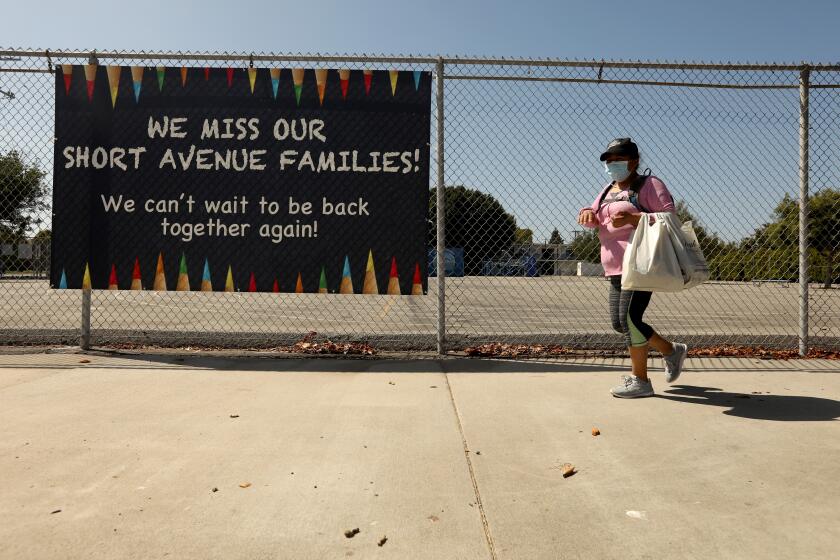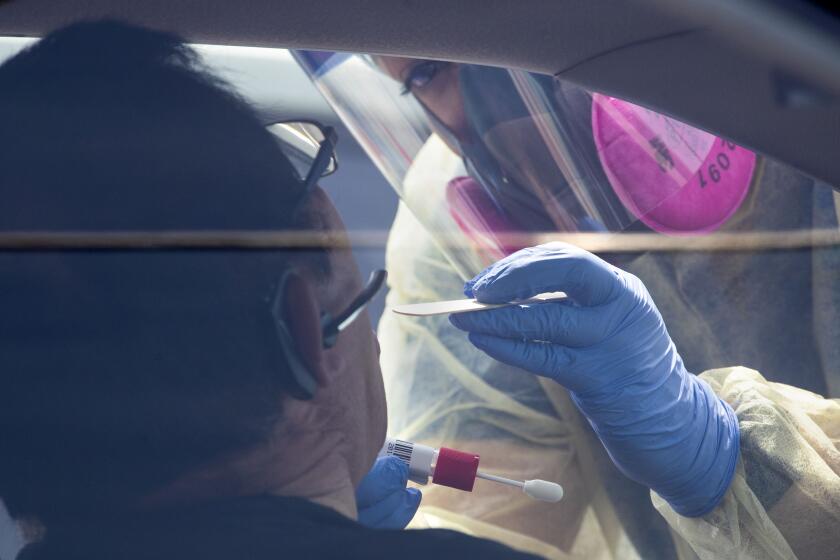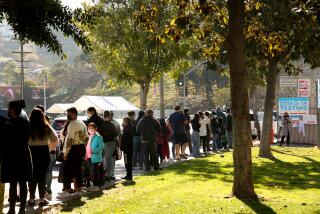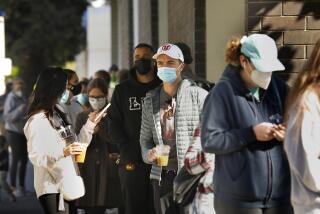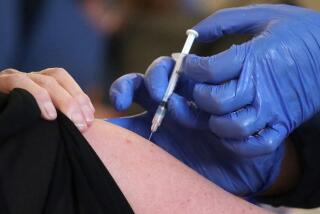Orange County opens new COVID-19 testing sites, but appointments are hard to get
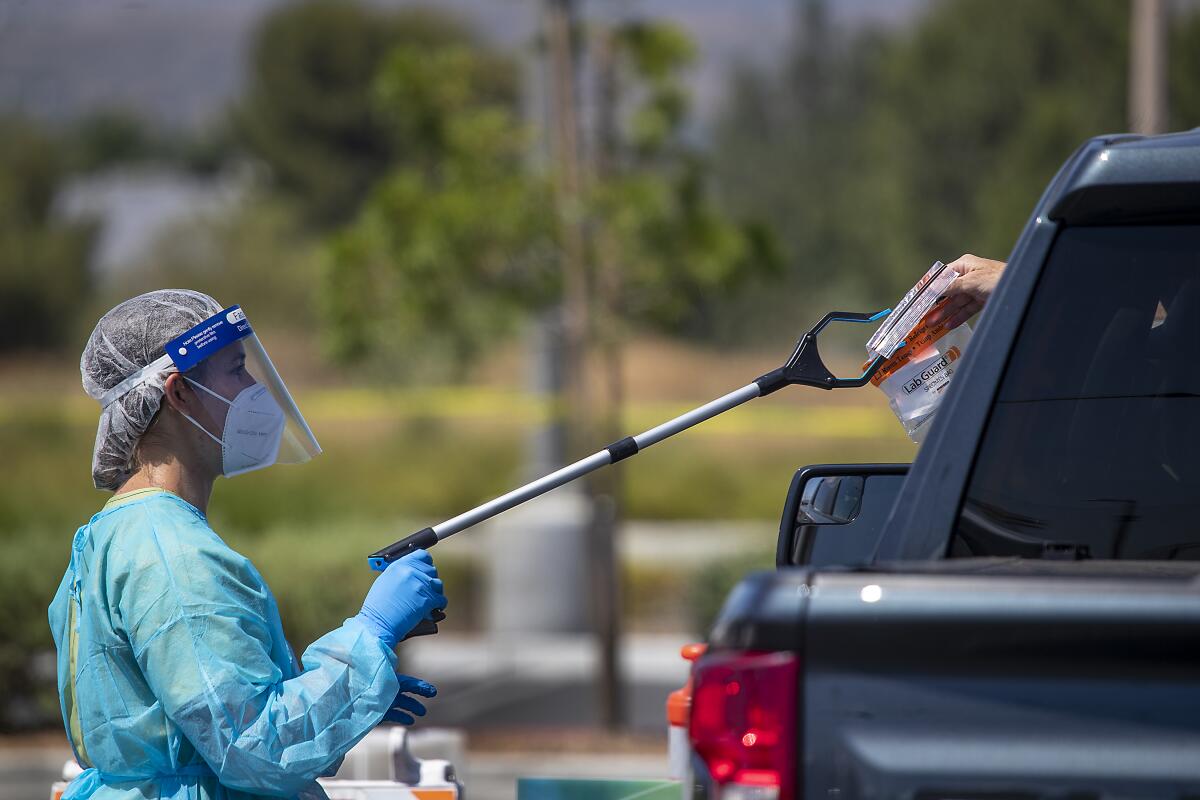
- Share via
As California announces new guidelines to prioritize the most vulnerable for COVID-19 testing, the Orange County Health Care Agency has launched new testing facilities to expand access to residents. But already demand may outpace availability.
Irvine, which has confirmed more than 840 infections, was the county’s first city to open a drive-through testing location for city residents. The facility — which opened Monday and is run by Curogram, an Irvine-based company that has helped develop testing sites in Houston, Atlanta and New York City — was offering appointments from 8 a.m. to 5 p.m. Monday through Thursday for a four-week testing program.
But within two days, all appointments were booked as demand for testing continues to rise throughout the state.
“As appointments become available, the city will provide updates on an ongoing basis,” a statement on the city’s online testing portal reads.
The ongoing discussion about what school will look like in the months ahead comes on the heels of a record-breaking day among the number of daily coronavirus cases reported in the state.
Another Orange County testing site aimed at Anaheim and Santa Ana residents launched Wednesday at the Anaheim Convention Center. The facility, run by 360 Clinic, will give priority to those who cannot get tested through a healthcare provider and are either symptomatic, have come into contact with a person with a known exposure to the virus, live in congregate or institutional settings or are considered essential workers.
By midmorning Wednesday, same-day appointments at the new “super site” appeared to be fully booked.
The Anaheim facility can conduct 600 to 800 tests per day, Wednesday through Sunday, with a goal of reaching 1,200 per day within two weeks. The Irvine site, in lot No. 6 at the Orange County Great Park, can conduct 260 tests per day.
“This is really helpful in our fight to get the novel coronavirus under control in Orange County,” Board of Supervisors Chairwoman Michelle Steel said.
“Ramping up testing, particularly among front-line workers and hard-hit communities, is essential as we work to better understand the spread of the virus in our communities and work to make better policy that will protect the public while also allowing our residents to go to work, pay their bills and put food on the table.”
California failed to establish an effective coronavirus testing system early on, leaving it far behind — even now — in the fight against COVID-19.
Anaheim and Santa Ana account for the bulk of the county’s COVID-19 cases, recording a combined total of nearly 9,500 infections. The county has confirmed more than 26,100 infections, including 865 reported Tuesday.
“This is so important for Anaheim, one of the hardest-hit cities in Orange County,” Supervisor Doug Chaffee said in a statement. “Anaheim and Santa Ana, Orange County’s largest cities, make up nearly 22% of our population, but they account for 40% of the cases.”
Roughly 324,479 tests have been administered in the county, and about 100,000 of those have been conducted since June 19. There are currently more than 50 sites offering free testing in the county.
Orange County’s seven-day average rate of positive infections is at 14.6%, substantially higher than last week’s rate of 10%. The state’s safety threshold is 8% or less.
California is testing about 105,000 people a day, California Health and Human Services Secretary Dr. Mark Ghaly said Tuesday. The cost of a test is $100 on average, he said.
Amid a nationwide shortage in testing supplies and a surge in testing demand that has exceeded current capacity, the state has issued new guidelines to ensure that the most vulnerable are tested first.
“Although we want to maintain access for the general population to testing, focusing first on those whose clinical course or community can really benefit from this more targeted testing approach — not as an exclusive but as an initial priority group — is very important for us. Especially during this time where transmission is high and turnaround times have increased,” Ghaly said.
Other communities in Southern California have already adjusted their testing priorities or had to scale back amid dwindling supplies. Los Angeles County last week revised recommendations on who should get tested. And San Berndardino County recently had to cancel hundreds of appointments, citing a shortage in testing materials
Times Community News writer Matt Szabo contributed to this report.
More to Read
Sign up for Essential California
The most important California stories and recommendations in your inbox every morning.
You may occasionally receive promotional content from the Los Angeles Times.
